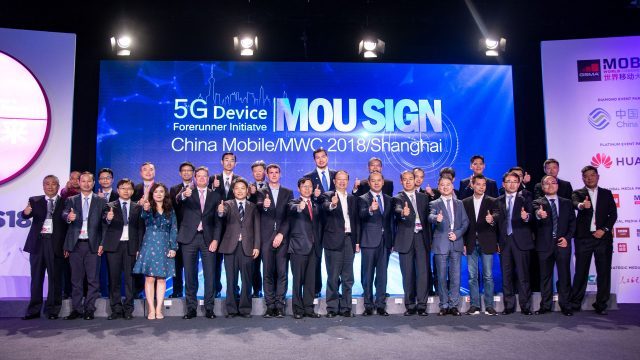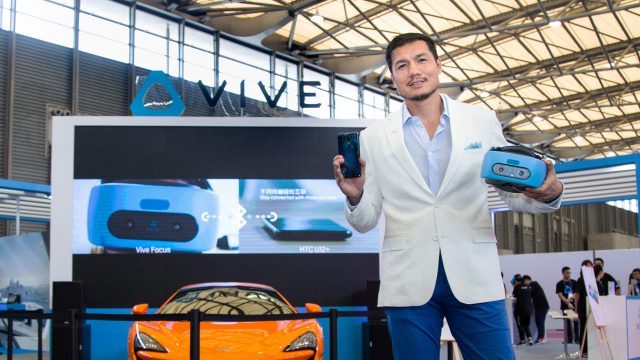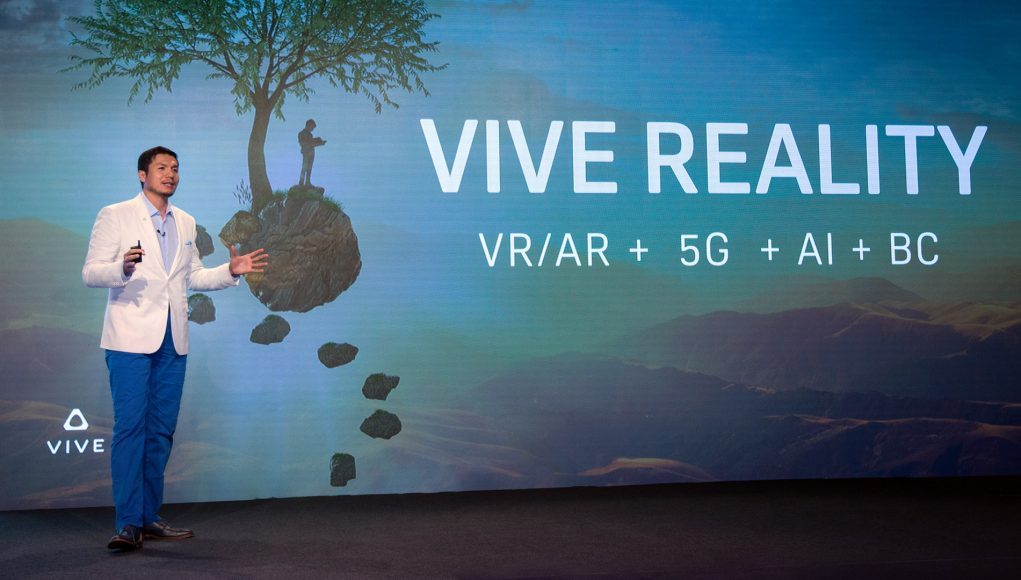HTC and China Mobile Communications Corporation today jointly announced a partnership to “accelerate the proliferation of 5G infrastructure and devices in China.” Further, China Mobile, the country’s massive state-owned mobile phone carrier, will help HTC push its VR devices into more retail channels.
At MWC Shanghai 2018 this week, China Mobile and HTC signed the “5G Device Forerunner Initiative,” a joint effort to develop the 5G mobile network ecosystem with infrastructure and a devices. HTC believes that 5G will unlock new possibilities for VR and AR technologies, as CEO Cher Wang said earlier this year:
5G will massively enlarge VR and AR capabilities by leveraging supercomputing power in the cloud while lowering device power consumption. VR and AR will no longer be constrained to local hardware and storage. Virtual and augmented reality are part of the ‘virtuality’ continuum. They will be combined in different proportions in devices in the future depending on our needs. Cloud computing over 5G will enable every single VR and AR terminal to be the most powerful device in the world, bringing a more immersive experiences than ever.
The announcement today with China Mobile takes HTC another step toward that vision. The companies say that the partnership will “propel the development of newly enabled application models leading up to its 5G network’s broad commercialization in 2020.”

In addition to equipping networks and devices with 5G technology, the partnership will see China Mobile helping to “boost the sales of HTC products,” specifically the company’s VR devices, though details on exactly how that will happen aren’t clear yet.
One logical conclusion to draw from this news is that may one day see a new version of HTC’s standalone Vive Focus headset with 5G connectivity built right in; currently the company only offers models with WiFi. Further into the future, assuming HTC’s vision of 5G comes to fruition, we could see new VR and/or AR headsets which act as thin clients that stream VR content that’s rendered in the cloud.

Where does that leave HTC’s tethered headsets, the Vive and Vive Pro? 5G cloud streaming could potentially also work for these devices, and in fact HTC has already experimented with dedicated boxes doing just that. If VR streaming from the cloud ever becomes viable, it could allow HTC to cut the high-end PC out of the VR equation all together, potentially making it more accessible to a larger audience.
VR streaming over 5G is not a foregone conclusion however. Even local streaming technology, to get the content just a short distance from the PC to the headset, is still in its infancy. VR’s extremely low tolerance for latency, and demand for still greater specifications, are the key challenges to delivering VR content from the cloud, even over a speedy 5G network. Only time will tell if the right factors come together to make it a reality.







